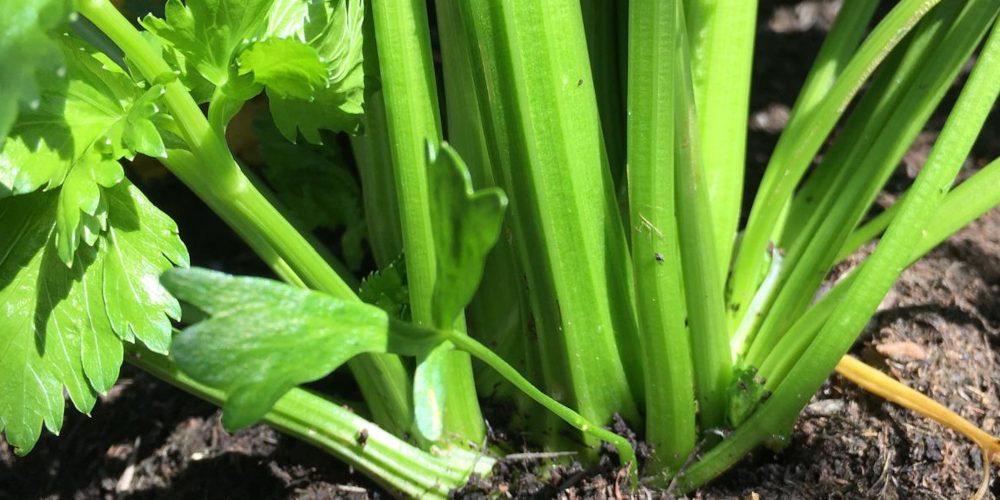- Choose a sunny site with fertile, moisture-retentive soil – dig in extra compost or organic matter before planting
- Celery is better grown in the ground or in raised beds, but you can grow it in large pots too – each plant will need a 30cm pot
- Plant 30cm apart
- Our celery is an American green variety that does not need to be trenched
- Plenty of organic matter is essential. It prefers acid to alkaline conditions, so never give it lime.
How to grow... Celery
Rocket Growing Guides

Celery has a bit of a bad reputation for being tricky to grow, but the good news is that we do all the hard work for you. So when your baby plants arrive they are easy to grow successfully. There are two types of celery, self blanching and trenching. Ours is the Prinze variety which is self blanching, which basically means that you don’t need to dig a trench for it or worry about earthing up.
- Celery Growing Guide
How to Plant Celery
How to Grow Celery
- Celery is a thirsty plant so keep it well watered
- Mulching will really help during hot, dry spells
- Feed with a liquid feed in the summer months
- As the plants develop cut off the side shoots so that they shoot straight upwards.
- If your celery is growing in containers or pots, it’s best to add a liquid feed every 2 weeks during the summer months
Common Pests and Problems with Celery
- Slugs can sometimes bother celery, although they do tend to choose other plants in the veg patch first. Still, it is worth protecting younger, more vulnerable plants.
- Celery fly – these tend to damage leaves, so shouldn’t hurt the celery stalks too much. However, if you do see grubs burrowing in the leaves, cut off affected leaves and discard.
- Stalks become tough and stringy – this is likely to be a lack of water or harvesting too late in the season.
How to Harvest and Store Celery
- Celery will be ready for harvest from late summer to early autumn
- Harvest before the plant starts to produce side shoots from the base
- When your plants are big enough, you can simply cut them off at the stalk.
- Once harvested, cut off the foliage (it’ll make a good stock, or pop it on the compost pile.) Celery will store in the fridge for several days, but will taste better eaten soon after harvesting.

